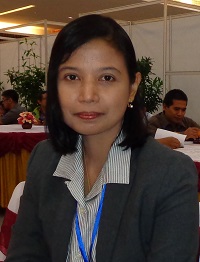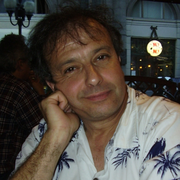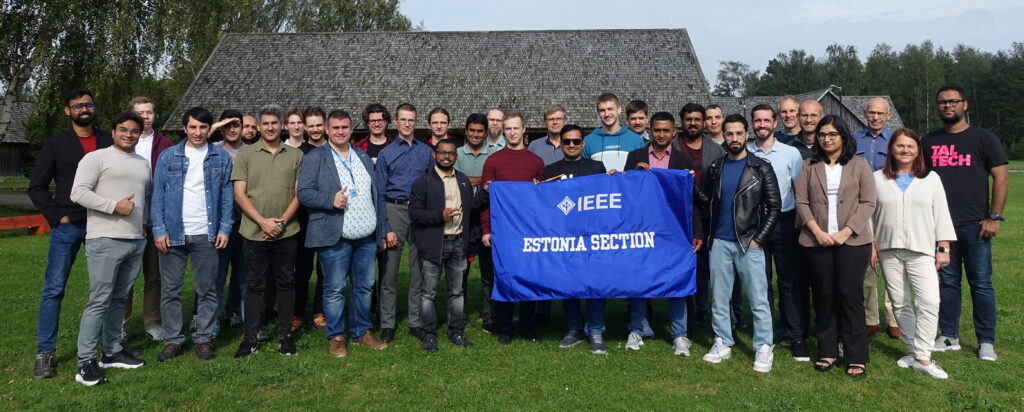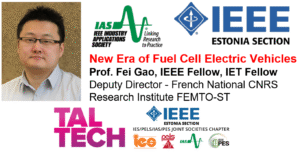Upcoming Events
News
IEEE Computer Society Distinguished Lecturer Bernadetta Kwintiana Ane in TUT
IEEE Computer Society Distinguished Lecturer Bernadetta Kwintiana Ane will give a lecture on Moday 6th of June 2016 at 11:00 in IT Maja Akadeemia tee 15A, room # ICT-507 A/B
Embedded Systems as Foundations of Cyber-Physical Systems
Abstract: Robots, intelligent buildings, implantable medical devices, cars that drive themselves or planes that automatically fly in a controlled airspace are examples of Cyber-Physical Systems (CPS). Today, CPS can be found in such diverse industries as aerospace, automotive, energy, healthcare, manufacturing, infrastructure, consumer electronics, and communications. Everyday life is becoming increasingly dependent on these systems, in some cases with dramatic improvements. CPS can be described as smart systems that encompass computational (i.e., hardware and software) and physical components, seamlessly integrated and closely interacting to sense the changing state of the real world. These systems involve a high degree of complexity at numerous spatial and temporal scales and highly networked communications integrating computational and physical components. In fact, CPS is about the intersection, not the union, of the physical and the cyber. In CPS, embedded computers and networks monitor and control the physical processes, usually with feedback loops where physical processes affect computations and vice versa. The design of such systems requires understanding the joint dynamics of computers, software, networks, and physical processes. Therefore, it is not sufficient to separately understand the physical components and the computational components. We must instead understand their interaction.
Bernadetta Kwintiana Ane is a Senior Researcher at the Institute of Computer-aided Product Development Systems, University of Stuttgart in Germany. She has 12 years teaching experiences mainly in Engineering Graphics and Design, particularly for application in the fields of Mechanical Engineering and Computer Science. Her research interest includes computer  aided geometric design (CAGD), reverse engineering, computer-aided design/manufacturing/ engineering (CAD/CAM/CAE), product design, design visualization, design automation, computer supported collaborative design, virtual reality based product design, cyber-physical design systems, and not limited to scientific data rendering and visualization for application in bioinformatics and in-silico modelling.
aided geometric design (CAGD), reverse engineering, computer-aided design/manufacturing/ engineering (CAD/CAM/CAE), product design, design visualization, design automation, computer supported collaborative design, virtual reality based product design, cyber-physical design systems, and not limited to scientific data rendering and visualization for application in bioinformatics and in-silico modelling.
She has won various international research grants and has published more than 65 scientific writings in the form of books, chapters in books, journal papers, and conference papers. She is a fellow of Monbukagakusho, Japan as well as the Alexander von Humboldt Foundation and German Academic Exchange Service (DAAD), Germany. Since 2007, she played active roles as lead researcher in the international research projects in Germany as well as member in other European countries’ projects. Currently, as a Humboldtian and IEEE professional member she serves internationally as research fellow for several European research centers. She also serves as an associate editor for the Journal of Intelligent Automation and Soft-Computing (Taylor & Francis) and Journal of Applied Soft Computing (Elsevier Science), as well as grant assessor for The Czech Academy of Science, The Czech Science Foundation, and an independent expert to assist the European Commission with tasks in connection with the Framework Programme (Horizon2020) for Research and Innovation.
Additional information:
Urmet Jänes <urmet AT uninet.ee>
IEEE Distinguished Lecturer Prof. Hamid Krim in Tallinn and Tartu
The IEEE Distinguished Lecturer of Signal Processing Society Prof. Hamid Krim is going to deliver a speech on Friday, June 10 in two places:
- 10:00 in Tallinn University of Technology, auditorium NRG-131 (Faculty of Power Engineering building at Ehitajate tee 5), and
- 15:30 – 17:30 in University of Tartu, auditorium (room 111) of the Computer Science Department, located at Juhan Liivi 2, 50409 Tartu.
The event in Tartu is organized by the University of Tartu IEEE Student Branch, and sponsored by the iCV Research Group. The speech will be followed by free discussion and refreshments. Two attendants will win prizes each being worth a one-year IEEE student membership. For more information, you may contact us at ieee AT ut.ee, or visit our website http://ieee.ut.ee/ or our Facebook page https://www.facebook.com/IEEETartu/.”
Title: Convexity, Sparsity, Nullity and all that….
Abstract: High dimensional data exhibit distinct properties compared to its low dimensional counterpart; this causes a common performance decrease and a formidable computational cost increase of traditional approaches. Novel methodologies are therefore needed to characterize data in high dimensional spaces. Considering the parsimonious degrees of freedom of high dimensional data compared to its dimensionality, we study the union-of-subspaces (UoS) model, as a generalization of the linear subspace model. The UoS model preserves the simplicity of the linear subspace model, and enjoys the additional ability to address nonlinear data. We show a sufficient condition to use l1 minimization to reveal the underlying UoS structure, and further propose a bi-sparsity model (RoSure) as an effective algorithm, to recover the given data characterized by the UoS model from errors/corruptions. As an interesting twist on the related problem of Dictionary Learning Problem, we discuss the sparse null space problem (SNS). Based on linear equality constraint, it first appeared in 1986 and has since inspired results, such as sparse basis pursuit, we investigate its relation to the analysis dictionary learning problem, and show that the SNS problem plays a central role, and may naturally be exploited to solve dictionary learning problems. Substantiating examples are provided, and the application and performance of these approaches are demonstrated on a wide range of problems, such as face clustering and video segmentation.
 Biography: Hamid Krim received his BSc. MSc. and Ph.D. in Electrical Engineering. He was a Member of Technical Staff at AT&T Bell Labs, where he has conducted R&D in the areas of telephony and digital communication systems/subsystems. Following an NSF postdoctoral fellowship at Foreign Centers of Excellence, LSS/University of Orsay, Paris, France, he joined the Laboratory for Information and Decision Systems, MIT, Cambridge, MA as a Research Scientist and where he was performing and supervising research. He is presently Professor of Electrical Engineering in the ECE Department, North Carolina State University, Raleigh, leading the Vision, Information and Statistical Signal Theories and Applications group. His research interests are in statistical signal and image analysis and mathematical modeling with a keen emphasis on applied problems in classification and recognition using geometric and topological tools. He has served and is currently serving on the IEEE editorial board of SP, and the TCs of SPTM and Big Data Initiative, as well as an AE of the new IEEE Transactions on SP on Information Processing on Networks, and of the IEEE SP Magazine. He is also one of the 2015-2016 Distinguished Lecturers of the IEEE SP Society.
Biography: Hamid Krim received his BSc. MSc. and Ph.D. in Electrical Engineering. He was a Member of Technical Staff at AT&T Bell Labs, where he has conducted R&D in the areas of telephony and digital communication systems/subsystems. Following an NSF postdoctoral fellowship at Foreign Centers of Excellence, LSS/University of Orsay, Paris, France, he joined the Laboratory for Information and Decision Systems, MIT, Cambridge, MA as a Research Scientist and where he was performing and supervising research. He is presently Professor of Electrical Engineering in the ECE Department, North Carolina State University, Raleigh, leading the Vision, Information and Statistical Signal Theories and Applications group. His research interests are in statistical signal and image analysis and mathematical modeling with a keen emphasis on applied problems in classification and recognition using geometric and topological tools. He has served and is currently serving on the IEEE editorial board of SP, and the TCs of SPTM and Big Data Initiative, as well as an AE of the new IEEE Transactions on SP on Information Processing on Networks, and of the IEEE SP Magazine. He is also one of the 2015-2016 Distinguished Lecturers of the IEEE SP Society.
Additional information:
Morteza Daneshmand, e-mail: mortezad AT ut.ee
IEEE event in Tartu on Thu. Apr. 07, 16:00 – 18:00
The University of Tartu IEEE Student Branch is going to hold a career workshop on Thursday, Apr. 07, 16:00 – 17:30. During the workshop, as the main theme, the following successful entrepreneurs will deliver keynote speeches:
First is Jürgen Jõgeva, the Business Developer of Axinom. It is one of the leading software solution providers in Europe and North America with more than 15 years of experience and a strong technical expertise in digital rights management, content management, synchronization services and delivery solutions for embedded, crew and consumer devices;
The second one is Priit Salumaa, the Sales and Project Manager of Mooncascade. They are a team of over 60 skilled professionals brought together by four software engineers, who are passionate about mobile and web development. They design and develop mobile applications, responsive web and backend solutions.
The agenda will be roughly as follows:
- 16:00 – 16:15 –> Introduction to IEEE, by the Branch Counselor (Assoc. Prof. Gholamreza Anbarjafari);
- 16:15 – 16:45 –> Talk by Jürgen Jõgeva;
- 16:45 – 16:55 –> Questions and answers;
- 16:55 – 17:25 –> Talk by Priit Salumaa;
- 17:25 – 17:35 –> Questions and answers;
- 17:35 – 18:00 –> Refreshments and free discussion.
Two attendants will win prizes each being worth a one-year IEEE student membership.
The venue is the Auditorium (room 111) of the Computer Science Department, located at Juhan Liivi 2, 50409 Tartu.
For more information, you may contact us at ieee@ut.ee, or visit our website http://ieee.ut.ee/ or our Facebook page https://www.facebook.com/IEEETartu/.”
Results of the Elections
The elections of Estonia Section and chapters’ officers took place electronically on 8-20 December 2015. The voting participation rate was up to 53%.
The detailed voting results:
IEEE Estonia Section vice-chair (26% – participation rate)
Position: Vice-Chair Peeter Ellervee (100%)
C/COM joint chapter chair and vice-chair (37%)
Position: Chair Urmet Jänes (100.0%)
Position: Vice-Chair Alar Kuusik (100.0%)
Education chapter chair and vice-chair (53%)
Position: Chair Tiia Rüütmann (12.5%); Toomas Rang (87.5%)
Position: Vice-Chair Tiia Rüütmann (write-in) (50.0%); Olev Märtens (write-in) (50.0%)
IM/ED/EMB joint chapter chair and vice-chair (43%)
Position: Chair Toomas Parve (100.0%)
Position: Vice-Chair Yar Muhammad (100.0%)
SP/CAS/SSC joint chapter chair and vice-chair (52%)
Position: Chair Gholamreza Anbarjafari (36.3%); Tõnu Trump (63.6%)
Position: Vice-Chair Gholamreza Anbarjafari (write-in) (100.0%)
Nominating Committee: prof. Vello Kukk, Maie Bachmann and Marko Koort.
Tallinn University of Technology Women In Engineering Student Branch Affinity Group
One more thing … IEEE Estonia Section has another new “family member”:
Petition to form the Tallinn University of Technology Women In Engineering Student Branch Affinity Group was officially approved on 17th of December 2015 by IEEE Member and Geographic Activities Department.
The Chairperson of new affinity group is Apneet Kaur, and Adviser is Maie Bachmann.
Ready for very fruitful year 2016!


